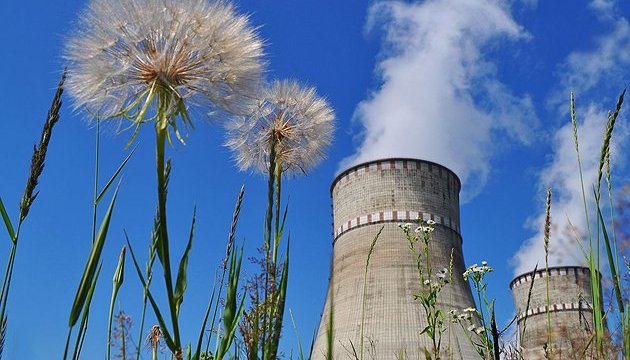УДК 54.066:54.027 • Issue 2 (30) / 2019 • 26-32 pages
Pushkar’ov O. V., Sevruk I. M., Demihov Y.M., Dolin V. V. Jr.
Pushkar’ov O. V., Phd (Geol.-Min.), Senior Research Officer., SE “Institute of Environmental Geochemistry of the NAS of Ukraine”, pushkarevigns@gmail.com
Sevruk I. M., Phd (Geol ), S.Researcher, SE “Institute of Environmental Geochemistry of the NAS of Ukraine”, igns219@gmail.com
Demihov Y.M., Phd (Geol.-Min.),, SE “Institute of Environmental Geochemistry of the NAS of Ukraine”
Dolin V. V. , Jr., Researcher, SE “Institute of Environmental Geochemistry of the NAS of Ukraine”, dolinvitaliy@gmail.com
Abstract
The possibility of using mineral adsorbents for cleaning the moderator of heavy water reactors from tritium is determined. Three dynamic systems have been created using montmorilonite, sepiolite and palygorskite clays, and zeolite (systems M-Z, S-Z and P-Z) as composite membranes. At the first stage, deuterium-tritium water (DTO) was filtered through mineral membranes, and at the second stage, these membranes were washed with protium water (Н2О). In the process of such two-stage filtration, the effect of separation of tritium and deuterium in the filtrate was first established. At the first stage of the experiment, the content of deuterium and tritium in the DTO filtrate in the system with the M-Z membrane was equally reduced and at the end of the filtration was slightly more than 50% of the initial concentrations. The separation coefficient of heavy hydrogen isotopes in this system did not exceed KT = 0.99. When DTO was filtered through the C-Z membrane, the fraction of tritium in the filtrate at the end of filtration decreased by 10% relative to the initial concentration, which is less than the fraction of deuterium, and the hydrogen isotope separation coefficient was KT = 1.15. In the P-C system, the residual fraction of deuterium in the DTO filtrate was 3% higher than the residual fraction of tritium and the hydrogen isotope separation coefficient was determined at the level of KT = 0.96. A different process is observed when filtering protium water (Н2О) through clay-zeolite adsorbents after their interaction with the DTO solution. In all the studied mineral adsorbents, the manifestations of fractionation of heavy hydrogen isotopes with coefficients KD = 13.2, 3.2 and 3.6 were established respectively for montmorillonite-zeolite, sepiolite-zeolite and palygorskite-zeolite composites with a predominant deuterium content in the filtrate, which indicates the possibility of using clay-zeolite mineral adsorbents for the purification of heavy water from tritium.
Key words: tritium, deuterium, heavy water, fractionation, adsorbent, montmorillonite, sepiolite, palygorskite.
Article
Reference
- Audi G., Bersillon O., Blachot J., Wapstra A.H. (2003) Nuclear Physics. A 729. pp. 3–128.
- Audi G., Wapstra A.H., Thibault C. (2012) Chinese Physics. V. 36, N 12. pp. 1603-2014
- Butler, H.L. (1963) Nucl. Safety,. 4, (3). pp. 77-82.
- Jackson, R.F. (1964) Proceedings of the Third International Conference of the Peaceful Uses of Atomic Energy, Geneva, United Nations, New York. pp.168-175.
- Matic-Vukmirovic, Z.( 1965) Proceedings of the Third International Conference on the Peaceful Uses of Atomic Energy. Geneva, United Nations, New York. 3. pp.407-413.
- Patterson, C.M. (1958) Proceedings of the Second United Nations International Conference on the Peaceful Uses of Atomic Energy, Geneva, United Nations,New York. Vol. 23, pp.295-301.
- Pushkarev V., Rudenko I., Zubko O., Dolin V. (Jr.) (2019). Visnyk of Taras Shevchenko National University of Kyiv: Geology. v. 1(84). pp. 16-20. http://doi.org/10.17721/1728-2713.84.02
- Berdonosov S.S. (1990) Chemical Encyclopedia. Moscow, Soviet Encyclopedia, P. 383.
- Mosin OV, Skladnev D.A., Shvets V.I. (1996). Biotechnology. 3, pp. 12–32.
- Pushkarev V., Rudenko I., Skripkin V.V. (2015). Visnyk of Taras Shevchenko National University of Kyiv: Geology. v., 71. pp. 43 – 48.
- Pushkarev V., Rudenko I., Dolin V. (Jr.) (2014). Zb. nauk. pr. Іnst. Geohіmії Navkolyshn’ogo Seredovyshcha, Vyp. 23. ua, pp. 75 -84. 12. Pushkar’ov, O.V. and Priymachenko, V.M. (2010), Zb. nauk. pr. Іnst. Geohіmії Navkolyshn’ogo Seredovyshcha, Vyp. 18, Kyiv, ua, pp. 149-161.
- Pushkar’ov, O.V. , Priymachenko, V.M. Zolkin I.O. (2012) Zb. nauk. pr. Іnst. Geohіmії Navkolyshn’ogo Seredovyshcha, Vyp. 20. pp. 98 -107.
- Syniak Yu.Ie., Hryhoriev A.I., Haidadymov V.V., Mednikova Ye.I., Lebedieva Z.M., Huskova Ye.I. (1998), Space biology and aerospace medicine. Materials of the XI conference. 2, P. 201
- Skulskyi N.A., Demykhov Yu.N., Lysenko O.B., Sobotovych Э.V. (2011) Zb. nauk. pr. Іnst. Geohіmії Navkolyshn’ogo Seredovyshcha, Vyp. 19. pp. 77–86.
- Rudenko, I. M., O. V. Pushkar’ov, V. Vik. Dolin, et al. 2017. Mineralogical Journal. (Ukraine). 39 (2): 64–74.
